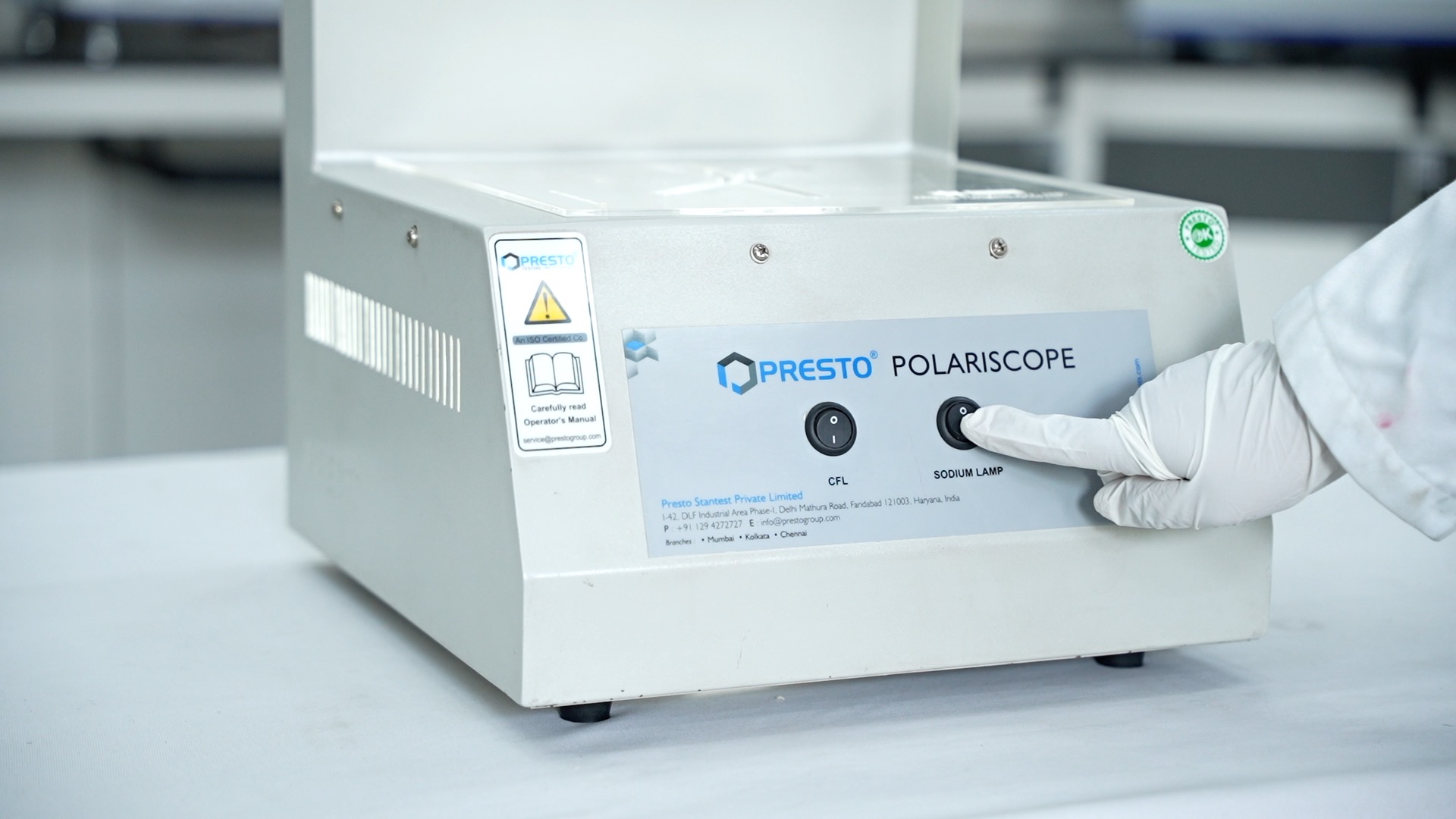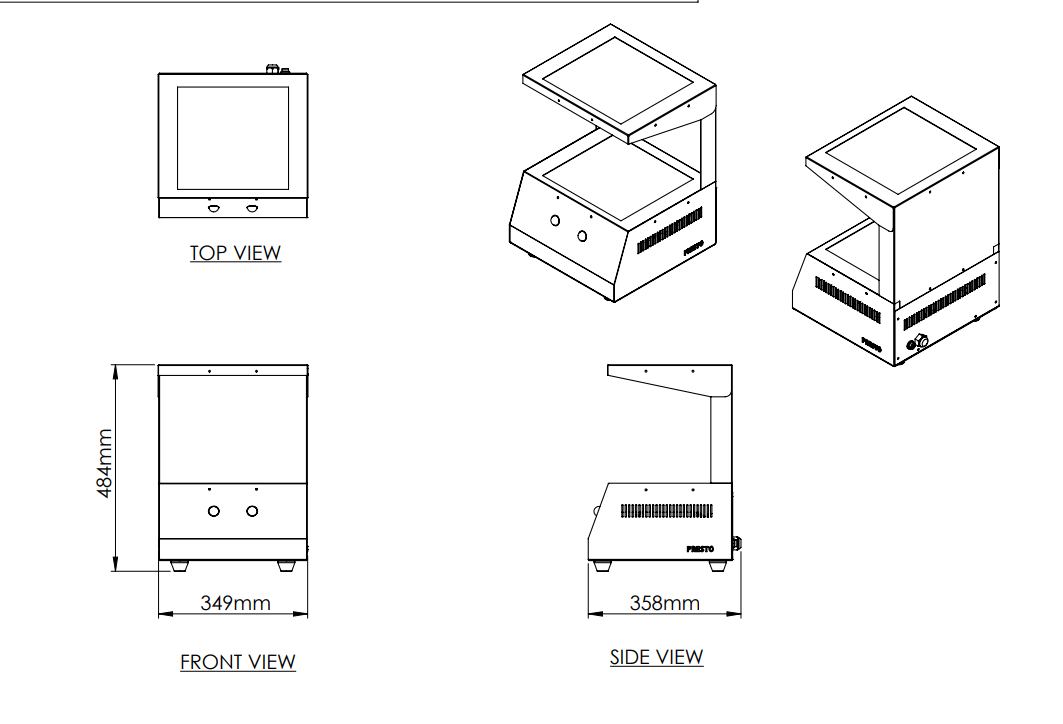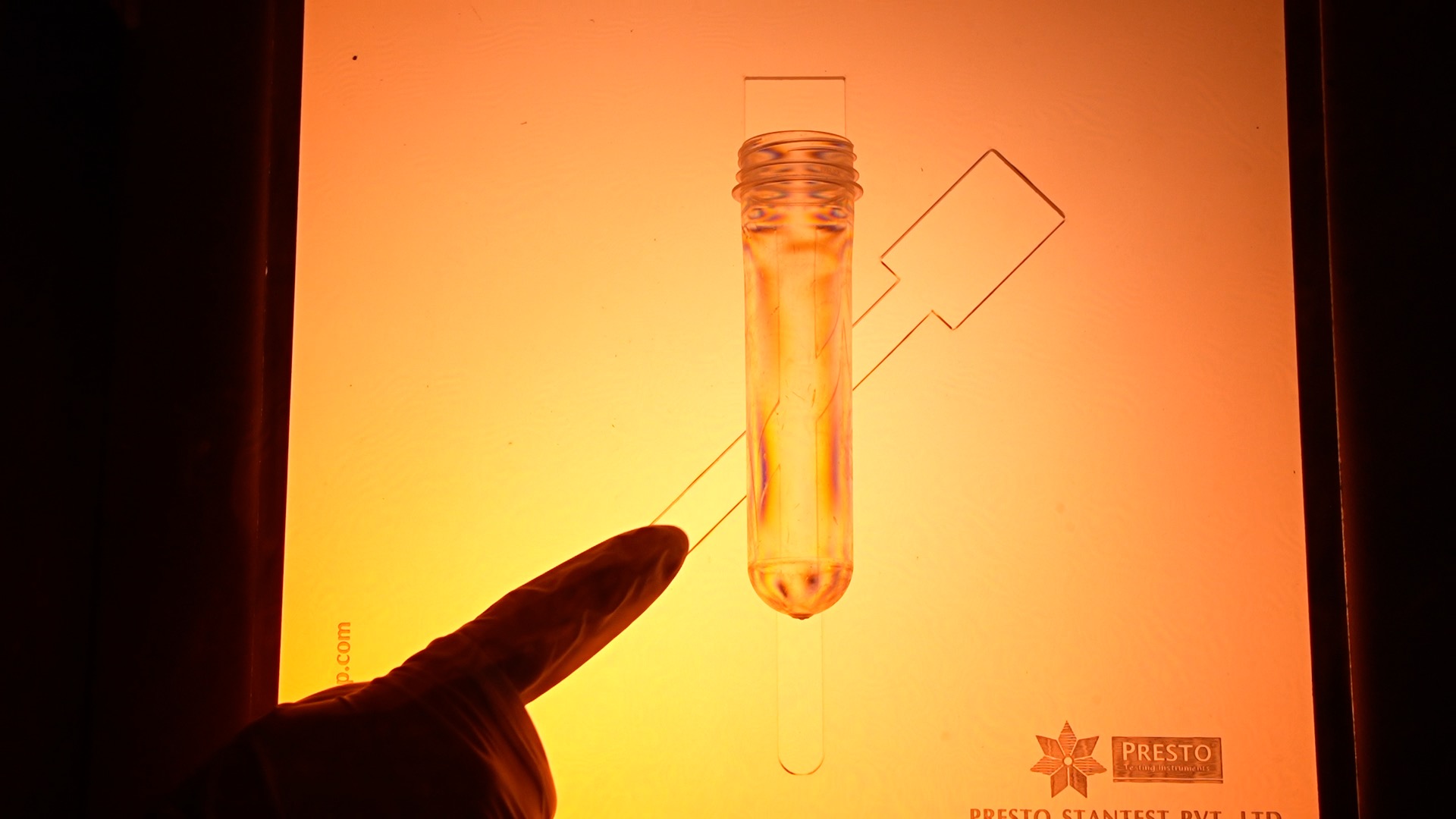

Gaurav Malhotra-Testing Instrument Expert
26-12-2024
In gemology, glass manufacturing and material science, the ability to precisely analyze stress patterns is critical. Which is why Polariscope, an advanced optical instrument, has become an indispensable tool in this regard.This blog delves into the advanced workings, applications, and innovations of the Polariscope, offering insights into its role in quality control, scientific research, and industrial processes.

A Polariscope is an optical equipment in the study of stress distribution within birefringent materials, and it uses polarized light. The basic science it works on is based on polarized light. It refers to waves that move along one plane. When this moves through a stressed material, the velocity and path changes, and interference takes place that can be examined with the naked eye.
The working of a Polariscope can be represented with a simplified diagram that consists of the following main parts:
The basis working principle is birefringence, where the effect of stress in a material splits light into two rays and with different refractive indices, the interference of these two rays produces characteristic fringe patterns observable through the analyzer.

The applications of polariscopes are not limited to simple stress detection.
1. Glass manufacturing and quality control
In the glass manufacturing world, stress-induced birefringence can invalidate the product. By characterizing stress patterns, producers can:
PolariScope is used mainly in gemology to figure out the optical properties in gemstones:
3. Material Science and Research
In advanced material research, Polariscopes are used for:
Recent developments in Polariscope technology have improved accuracy and usability:
Digital Polariscopes: High-resolution cameras and digital displays improve visualization and recording of stress patterns.
Automated Analysis: Software integration allows for automated fringe counting, stress quantification, and data logging.
Compact Designs: Portable models facilitate field testing.
High-Intensity LED Sources: Offer uniform illumination and longer lifespan compared to traditional halogen lamps.
With more than 40 years in the manufacturing of advanced testing equipment, Presto represents a leader in Polariscope glass inspection. Our range of Polariscopes is designed to meet diversity in industry needs and also ensures unparalleled accuracy and longevity. Whether you are interested in a polariscope for sale or need custom-built solutions, our expertise always ensures that every product represents the highest standards of both quality and performance.

The Polariscope uses polarized light for the detection of changes in refractive indices due to internal stresses. These changes result in interference patterns, which can then be interpreted to determine the magnitude and direction of stress.
A polarimeter ensures that the glass products are free from residual stresses by revealing stress patterns, thus enhancing durability and safety. This is especially critical in industries producing tempered glass, optical lenses, and architectural structures.
Polariscopes are an indispensable device for professionals who want the best in material stress analysis. From their working principle to the latest innovations, these devices offer a range of applications, from glass manufacturing to gemology and material science. At Presto, excellence is our commitment to giving you the best in Polariscopes, so you will be empowered with the ability to achieve unparalleled accuracy and efficiency.
Whether you are looking for a polariscope for sale or you look to increase your knowledge related to the uses of the polariscope, expertise and innovative solutions from us give you all the confidence you require regarding advanced testing and quality. Contact us for more information like Polariscope working principle, price etc.
Phone: +91 9210 903 903
Mail: info@prestogroup.com
Related Blogs
.png&w=1200&q=75)
A Coefficient of Friction Tester is a device that measures the friction between surfaces. This instrument is used by manufacturers and researchers to check material quality and performance.
.png&w=1200&q=75)
A Universal Testing Machine (UTM) is a versatile and essential tool for evaluating the mechanical properties of materials. It helps industries ensure that their materials meet required strength...

Bursting Strength Tester ensures packaging durability by measuring resistance to pressure. Ideal for paper, cardboard, and fabric testing to prevent failures.